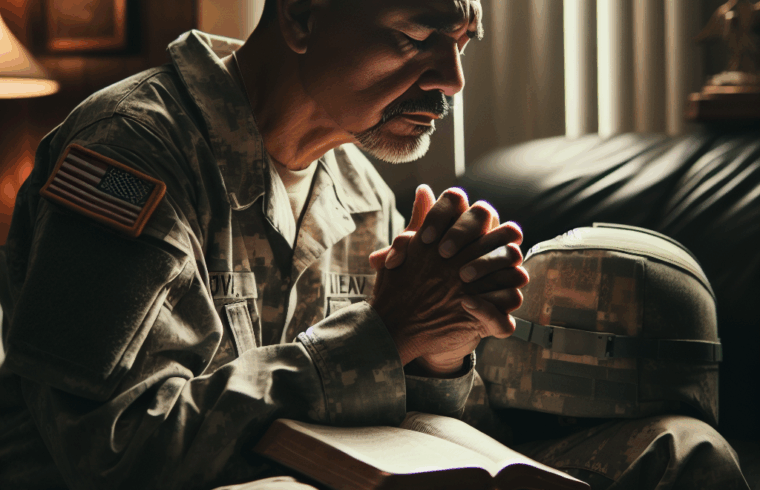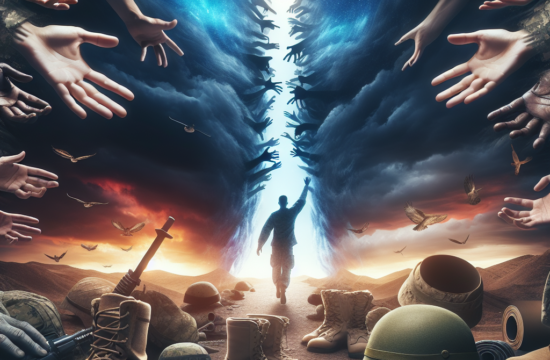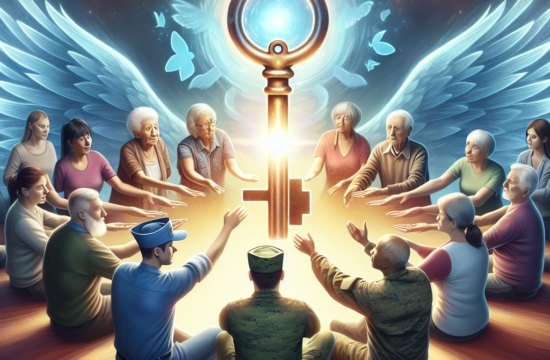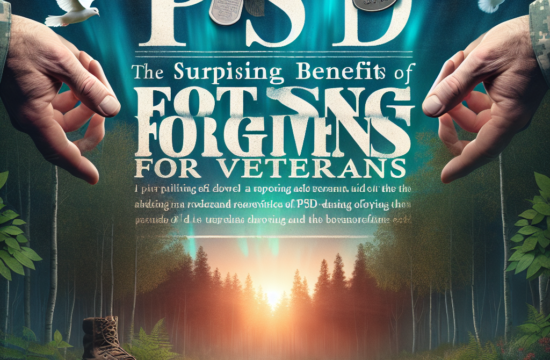==> Thank you for reading this post! Click Here If you are looking for support and Victory over PTSD.
Understanding the Nature of Combat Trauma
What is Combat Trauma?
When I first learned about combat trauma, it hit me hard. It’s not just about the physical injuries; it’s this emotional and psychological heavy load that soldiers carry. Combat trauma comes from experiences that create intense fear, helplessness, or horror. Soldiers may feel isolated, misunderstood, or plagued by memories that just won’t quit. For many, these experiences can lead to significant conditions like PTSD. Getting a grip on what combat trauma truly is was where my journey began.
I remember talking to a close friend who had been in combat. As he opened up, I realized that many folks think trauma ends when a soldier leaves the battlefield. But in reality, it often follows us home, interacting with our daily lives, our relationships, and even our faith. Understanding this scope helped me connect the dots about healing.
There’s a whole spectrum when it comes to combat trauma. Just like how some injuries need more time to heal, so do emotional wounds. It’s important to be gentle with oneself through this process and recognize that everyone handles trauma differently. Scars are real, whether visible or not, and accepting this is the first step toward recovery.
How Does It Affect Us?
Combat trauma can show itself in different ways. I remember stumbling through sleepless nights, replaying past events in my head. We can experience changes in behavior, heightened anxiety, and even withdrawal from loved ones. Feelings of guilt and shame often accompany these symptoms. At one point, I felt like I was trapped in a cycle that I couldn’t escape from.
Those affects can cloud our perspective and influence our daily lives. Sometimes, I found myself getting upset at small things or feeling disconnected from my surroundings. It dawned on me that these weren’t just mood swings; they were signals that something deeper was happening. Understanding these symptoms allowed me to get to the root of what I was experiencing.
Learning about the impact of combat trauma opened a new level of empathy within me. It was freeing to connect with others who’d faced similar challenges. This shared understanding is significant for helping combat survivors realize they’re not alone in their battles. The more we talk about it, the more we can support each other through our journeys.
The Role of Faith in Healing
As I navigated the rocky road of recovery, my faith stood out as a beacon of hope. For me, turning to God wasn’t just comforting; it became my lifeline. I found solace in prayer, asking for strength and guidance during moments of despair. Having that spiritual connection gave me a feeling of belonging and purpose, as I was reminded that I never walk alone.
I started reading scripture in hopes of finding relevant wisdom for my situation. Verses about courage and resilience uplifted my spirits and helped shift my mindset. My faith taught me about surrendering my fears to a higher power. There’s something incredibly liberating about letting go and allowing myself to be supported through faith.
Also, it wasn’t just about my connection with God. Sharing my experiences with fellow believers provided a community of encouragement. Their insights helped me ground myself in the understanding that recovery is a journey, one that is enhanced with the support of others who care. There’s amazing strength in numbers, and the faith community can be a powerful healing force.
The Journey Toward Recovery
Taking the First Step
Let’s be real, starting the journey to recovery can be daunting. I remember the reluctance I felt when it was time to face my trauma head-on. The first step, though, was to simply acknowledge that I had a problem. It’s not easy – the bravado built on the battlefield can make it tough to admit vulnerability. But that very admission opened doors for growth.
Seeking help from professionals felt like a leap of faith. I connected with counselors who understood my experiences and were equipped to facilitate healing. Each session was an opportunity to dive deeper into my emotions and unpack those heavy bags of trauma. Sure, it was tough at times, but having someone guide me through it made all the difference.
Taking that first step also involved surrounding myself with supportive individuals who understood the challenges. Whether it was fellow veterans or understanding friends, creating a network proved essential. I learned that when I shared my journey, it inspired others to reflect on their own experiences. Connection was a vital part of starting my healing journey.
Establishing Healthy Coping Mechanisms
Once I was ready to confront my trauma, I knew I needed coping strategies to guide me. It’s all about finding what works best for you. Journaling became a tremendous outlet for me. Writing down thoughts and emotions provided clarity and a way to reflect on progress. When words escaped me in conversation, laying them out on paper felt liberating.
Additionally, I found solace in physical activities. Whether it was going for a run or practicing yoga, moving my body allowed me to release pent-up energy and stress. Exercise became a form of therapy for me, giving me a healthy outlet to channel my feelings. It’s fascinating how something so physical could have such a profound impact on emotional well-being.
Spiritual practices also became part of my coping toolkit. Meditation and focusing on scripture gave me a sense of peace amid the storm. It helped me ground myself, reminding me to breathe and be present. These practices became integrated into my daily routine and helped establish a sense of calm even when the storm felt overwhelming.
Building Resilience
Resilience didn’t come overnight, but through continuous effort, I discovered my strength. It’s like building a muscle—the more I worked on my mental health, the stronger I became. I learned to embrace setbacks as part of the process instead of viewing them as failures. Each day provided an opportunity for growth, and I leaned into that experience.
Setting small goals helped in cultivating that resilience. For instance, I’d celebrate small victories like getting out of bed on a tough day or reaching out to a friend. These moments of triumph added up, creating a foundation of strength that I could rely on during difficult times.
Get Support and Help with Recovery! Visit us for more Information and Support
Moreover, I embraced the idea that resilience doesn’t mean being unaffected by trauma. It’s about learning how to respond and adapt positively. The more I practiced this perspective, the more I felt empowered to face challenges head-on. It’s an ongoing journey, and I strive to approach each day with an open heart and a resilient spirit.
Finding Strength in Community
The Importance of Support
No one has to journey through combat trauma alone. I quickly learned that surrounding myself with a supportive community can lighten the load. Whether it’s joining support groups or simply leaning on family and friends, there’s a degree of relief that comes from sharing burdens. It’s not about being a burden on others; rather, it’s about finding solace in connection.
In my experience, being a part of a support group was eye-opening. Engaging with others who understood the rollercoaster of emotions I was going through helped me feel less isolated. I could express frustrations without fear of judgment; in fact, it created a safe space for vulnerability. Together we shared stories, and through that sharing came healing.
Strength in community doesn’t just stem from groups; it can come in unexpected forms. I found friends who were willing to listen or simply grab a coffee when I needed to talk. Those little moments of connection create a sense that we’re not traversing this journey alone. As I leaned into those relationships, I found they offered strength during some of my darkest times.
Diving Into Helpful Resources
The digital age has made finding resources easier than ever. There’s a world of writing—books, blogs, videos—that can provide insight and healing strategies. I dove into literature about trauma recovery and spirituality, which offered additional perspectives on healing. These resources expanded my understanding and provided practical tools for coping.
Podcasts became a daily companion for me, filled with stories of resilience and healing. Hearing others share their journeys reminded me that triumph exists, even in the face of darkness. Those narratives inspired me to continue striving for a better tomorrow. It reinforced that healing is possible when we share our stories.
Local services often have resources available, too. I took advantage of workshops and seminars about trauma recovery within my community. These learning opportunities not only informed me about healing strategies but also connected me with others experiencing similar hardships. It built a sense of belonging that’s fundamental to the healing process.
Giving Back
One of the most fulfilling aspects of my journey has been the ability to give back. After learning so much about healing, I felt an urge to share my story with others facing combat trauma. Volunteering with veterans’ organizations and support groups helped solidify the lessons I’d learned. Giving time and effort to assist others in their healing cements the growth we gain from our own struggles.
Sharing my experiences offered hope to those who felt lost. There’s something powerful about hearing someone say, “I understand.” By opening up about my journey, I was able to connect with others in meaningful ways. It became a reminder that while the road is tough, healing and strength flourish when we support each other.
Giving back also enriched my own life. It cultivated purpose and broadened my perspective. Each encounter with someone else going through their journey reminded me of resilience, the importance of community, and the strength we draw from faith. It’s these connections that make the healing journeys worthwhile and worthwhile to share.
Conclusion
Facing combat trauma with God’s strength is not a sprint—it’s a marathon. It takes time, patience, and a willingness to lean on faith and others for support. In my experience, healing is a unique journey for each individual. By recognizing the nature of the trauma, exploring coping mechanisms, building resilience, and finding strength in community, we pave our paths toward recovery together.
FAQs
1. What exactly is combat trauma?
Combat trauma refers to the psychological and emotional scars that arise from experiences during combat. It’s usually characterized by intense fear, horror, or helplessness, often leading to conditions like PTSD.
2. How does faith help in healing from combat trauma?
Faith can provide a sense of hope and strength during the darkest moments. It offers a spiritual connection that helps individuals feel less alone, guiding them through their healing journey.
3. What are effective coping strategies for combat trauma?
Effective strategies include journaling, physical exercise, and engaging in spiritual practices. Finding what resonates with you personally is crucial for creating a healing routine.
4. How important is community support in recovery?
Community support is vital. It creates a network of understanding and empathy, allowing individuals to share their struggles openly without fear of judgment.
5. Can giving back help in the healing process?
Absolutely! Giving back can provide a sense of purpose and fulfillment, and sharing your experiences can inspire hope in others. It turns trauma into a tool for creating positive change.













